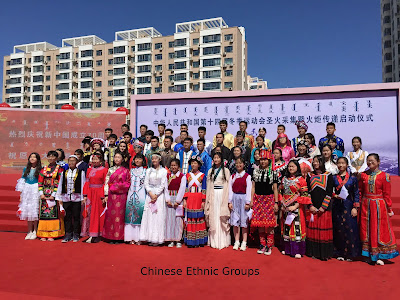An introduction to Chinese culture and tradition
Chinese culture and tradition
China is located in East Asia and is a socialist country. It was established on October 1, 1949, and its capital is Beijing. With a land area of about 9.6 million square kilometers, China is the third largest country in the world by land area. With a population of about 1.42 billion in 2020, China is currently the most populous country in the world. It is also a multi-ethnic country. There are 56 officially recognized ethnic groups, of which the Han nationality accounts for 91.51% of the total population. Chinese culture and traditional elements include ethnicity, religion, food, language, calligraphy, martial art, festival, folk custom, etc.
Ethnic Groups
Religion
Food
There is an old saying in China: People take food as their heaven. It can be seen that Chinese people are very particular about food, and "Have you eaten?" is their common greeting. Chinese food is an important part of Chinese culture and has a profound impact on East Asia. Chinese food pays attention to the combination of color, flavor, and taste, which is both good-looking and delicious. Due to China's vast territory, vast land and abundant resources, there are differences in climate, products, and customs in different places. For a long time, many flavors have been formed in the diet. The Chinese eat rice in the south and noodles in the north; The southern taste is sweet and the northern salty; The eastern taste is sour and the western spicy. Therefore, eight major cuisines have been formed in China, namely Shandong cuisine, Sichuan cuisine, Cantonese cuisine, Suzhou cuisine, Fujian cuisine, Zhejiang cuisine, Hunan cuisine and Anhui cuisine.
Language
China is a multi-ethnic and multilingual country with more than 80 languages and about 30 characters which are quite different. In order to ensure communication, ethnic minorities have been taught bilingually since childhood. They can not only speak their ethnic language, but also Chinese . Chinese is the most spoken language in both the country and the world. In 2000, Mandarin was identified as the national language of China. By the way, many Chinese are also fluent in English.
Calligraphy
Chinese calligraphy is an ancient art of writing ,which has about 1,000 years history. From oracle bone inscriptions, stone drum inscriptions, and bronze inscriptions, it has evolved into large seal script, small seal script, and official script. It has been stereotyped in cursive script, regular script, and running script. Chinese calligraphy has always exuded the charm of art. It is a very unique visual art, and Chinese characters are an important factor in it. Because it is produced and developed in Chinese culture, and Chinese characters are one of the basic elements of Chinese culture. Relying on Chinese characters is the main mark that distinguishes it from other types of calligraphy. The significance of learning calligraphy in China is that it can teach people to observe, imitate, and comprehend. It can also cultivate people's care, patience, perseverance, and so on.
Martial art
Martial art also known as kung fu is a traditional Chinese sport. Martial art has a long history, which are originated from the productive labor of ancient Chinese ancestors. In the production activities of hunting, people gradually accumulated the skills of chopping, slashing and stabbing. The offensive and defensive skills of these primitive forms are low-level, and have not yet broken away from the scope of production skills, but are the basis for the formation of martial art techniques. Later, tribal wars often occurred, so the experience of fighting on the battlefield was constantly summarized. The more successful one blow, one stab, one punch, and one leg were imitated, taught, and practiced. So martial art gradually formed. It has an extremely broad mass base and is a valuable cultural heritage accumulated and enriched by the Chinese people in the long-term social practice. It is one of the outstanding cultural heritages of the Chinese nation.
Festival and folk custom
China is a unified multi-ethnic country. Among the 56 ethnic groups, there are too many festivals to count. There are many festivals with different characteristics of various ethnic groups in China, which can be roughly divided into six aspects: production festivals, youth festivals, commemorative festivals, custom festivals and religious festivals. The Spring Festival, Qingming Festival, Dragon Boat Festival and Mid-Autumn Festival are known as the four traditional festivals of the Chinese Han group and the Spring Festival is the most solemn. The Spring Festival, also known as the New Year, is the most important traditional festival for the Chinese Han people for thousands of years, and it is also the most solemn and lively festival of the year. People hold these folk customs:
1、Little new year. The time is on the 23rd or 24th of the twelfth lunar month. Legend has it that the Kitchen God will report to the sky on this day about the situation in the world. On this day, people worship the God, hoping that he will say good things to the earth and keep it safe.
2、New year's Eve. On this day, people put up door gods and Spring Festival couplets,eat family reunion dinner, drink wine, set off firecrackers , give red envelopes to the elderly and children and saty up late.
3、The first day of the first lunar month. Family members put on new clothes, meet relatives and friends on the road, and congratulate each other. In some parts of China, people dance dragons and lions to celebrate.
4、The fifteenth day of the first month is the Lantern Festival. People eat Yuanxiao or Tangyuan, and enjoy Chinese lanterns.























No comments